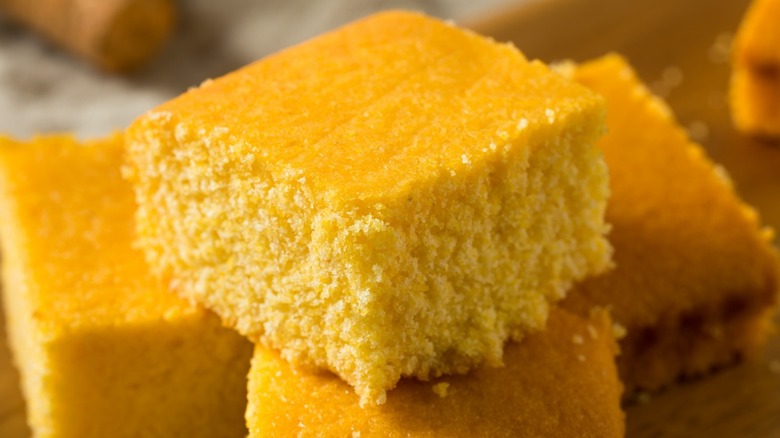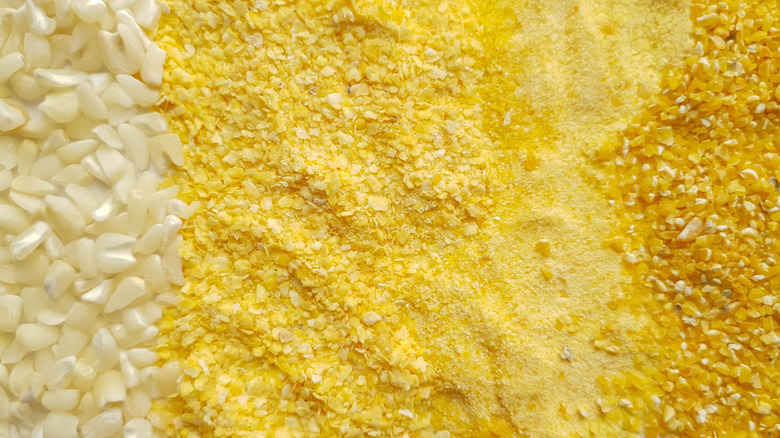The One Ingredient That Will Change Your Cornbread Forever
Cornbread, albeit less sweet than the dessert-like bread we enjoy today, is one of the oldest foods in America. Just as the French have the baguette and Italians focaccia, Americans have cornbread. This Thanksgiving staple and chili sidekick was created by Native Americans who used the technique of roasting, drying, and grinding corn. Over time, versions of cornbread traveled throughout the nation, adopting names like hoe-cake and Johnny cake. Still, today the quick bread is most associated with the South (per Ocala StarBanner).
Just as New Englanders have family recipes for clam chowder (pronounced chow'da on the shore) scribbled on the back of index cards, Southern families have their cornbread recipes passed down from grandmothers and aunts. Recipes vary between using yellow or white cornmeal and the amount of sugar used in the batter, and differ in the proper baking method — muffins, loaves, square pans, or cast iron skillets. Each is beloved for being the family's cornbread, a signature trademark as defining as a coat of arms or a family's tartan.
While premixed cornbread box mixes are convenient, they can contain unwanted ingredients like preservatives. Cornbread is simple to make with a few pantry staples: all-purpose flour, cornmeal, sugar, baking powder, baking soda, salt, whole milk, eggs, and butter. If you are willing to update that family recipe, one ingredient swap will improve your cornbread for generations to come.
A-maize-ing cornbread
Cornmeal is the main ingredient in cornbread, giving the bread its characteristic grainy texture. Until recently, most grocery stores offered a single variety, steel-ground medium-grind yellow cornmeal, unless you live in the south where there may be white cornmeal. Supermarkets and online retailers have made ingredients more accessible, offering coarse, medium, and fine-grind cornmeal, changing the texture of all our cornmeal recipes, including polenta and grits. In addition, we can think beyond yellow and white to pink, blue, and red too.
According to chef Sara Moulton, cornmeal is not a temperamental grain, meaning cooks can play around with the different textures without altering the recipe's outcome. The next time you make cornbread, try substituting the nuttier texture of stone-ground cornmeal for the finer, steel-ground variety that was likely used originally. Stone-ground or "whole grain" is a larger grain that still contains the corn's hull and germ, making it more nutritious and flavorful.
Brands such as Anson Mills and Marsh Hen Mill offer heirloom grains stone-ground in various colors and textures. Options like unicorn cornmeal in a pale pink and sea island blue cornmeal will instantly upgrade your cornbread while offering more texture. While the color won't change the recipe, each variety does taste different.
Stone-ground cornmeal should be stored in the refrigerator once opened or frozen. It will not last as long as other commercial varieties, which are shelf-stable. A Mexican cornbread casserole recipe or a honey cornbread muffin recipe would be perfect for the upgraded cornmeal, too.

